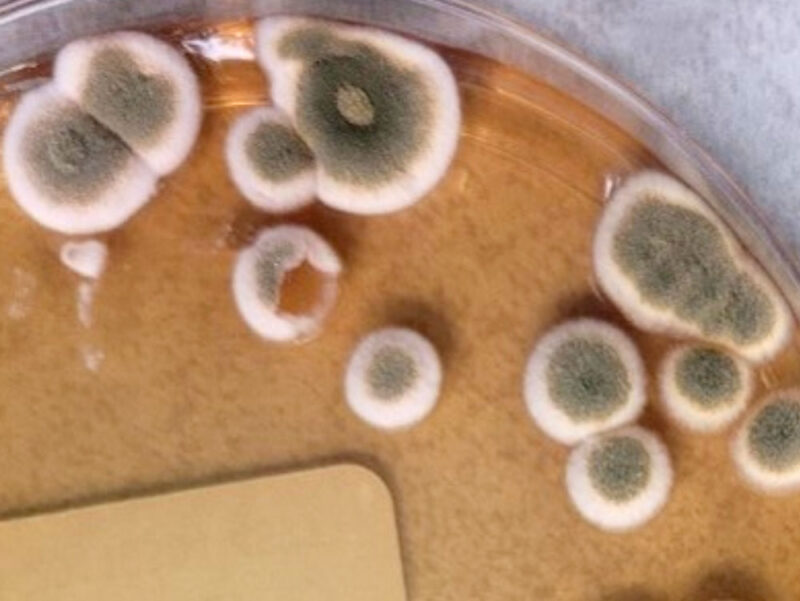Molds are a part of the Fungi kingdom. This kingdom is taxonomically diverse ranging from the yeasts that were mentioned above, to mushrooms, and finally to the molds and other filamentous fungi that most of us are familiar with. Fungi are eukaryotic organisms that exist as either saprophytes or parasites. They have a diverse range of pathogenicity impacting animals and plants alike. This can then have a further impact on various industries such as food and beverage, medicine, and various manufacturing types.
Most fungi are easy to recognize due to their commonly known appearances. Most people are familiar with the growth we see on week-old bread, or the mushrooms popping up in the mulch outside our homes. The growth we see on bread is a network of hyphae, which is called mycelium. The “dust” that may fall off the bread as you throw it in the trash are the spores. These spores are usually what results in the wide array of colors that are associated with molds!

There are various factors that are used for differentiating molds. One example is the mode of growth and the other is their appearance. Like bacteria, the same categories are used when describing the colony morphology types of fungi. These categories again are culture condition, colony shape, colony elevation, colony edge, colony size, colony surface type, colony opacity, colony color, and any other defining characteristics. An example of colony morphology is on the left for the organism Aspergillus versicolor. The colony morphology would be described as the following: a Potato Dextrose Agar (PDA) @ 35 °C, filamentous, raised, filiform, various sizes, matte/rough surface, opaque, and white edges with green center.
An interesting aspect of Fungi is that with age they can change in color, shape, and colony size. On the right is another example of Aspergillus versicolor.

This one appears to be less mature than the image on the left, indicated by the color of the colonies as well as the size. The colony size is much smaller, indicating a shorter incubation time. Finally, another common characteristic of fungi besides color change is reverse pigmentation and colony expansion.
If we look at the image on the left, we can see that the isolated colonies are reverting from the blue/green colony color to the original white morphology type of an immature Aspergillus versicolor. This is also noted in the colonies that are seen in the quadrant at the edge of the agar. If this organism was younger, the colonies would be isolated and smaller. However, because the growth was so expansive the colonies are overlapping causing a lawn-like structure to form.

Mature fungi can be difficult to identify if there is an expansive lawn of mycelium and spores populating the sample plate. Biolog Lab Services takes extreme care when extracting samples that are overgrown to ensure our customers get the highest quality results regardless of which developmental stage the sample is submitted in. However, difficulty arises when working with filamentous fungi that have overgrown a plate as a mixed culture. Even the faintest spore presence can result in mixed data if there is another mold or even yeast on a submitted sample. We are more than happy to work with customers in ensuring their samples are pure if there is any doubt or risk!


